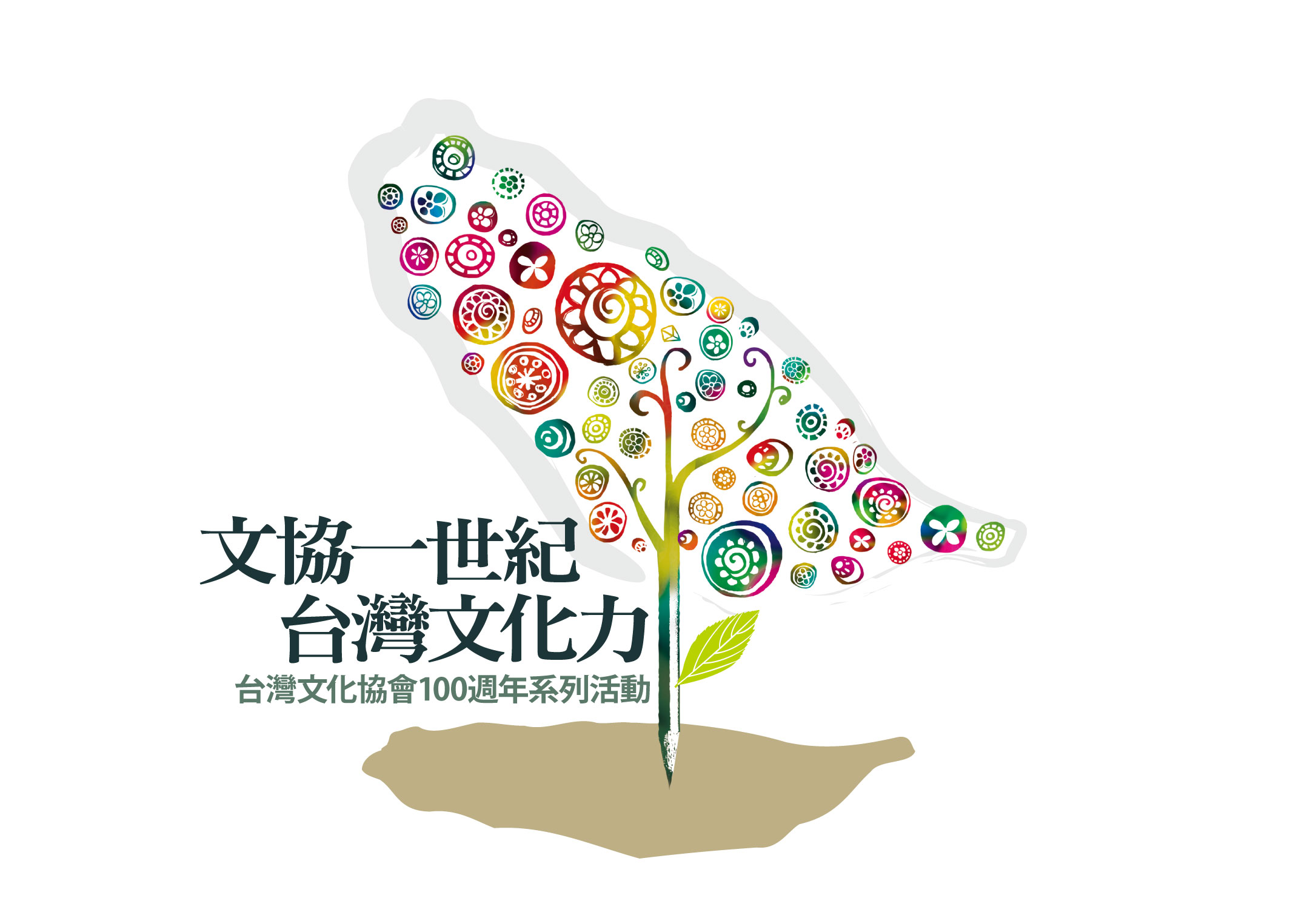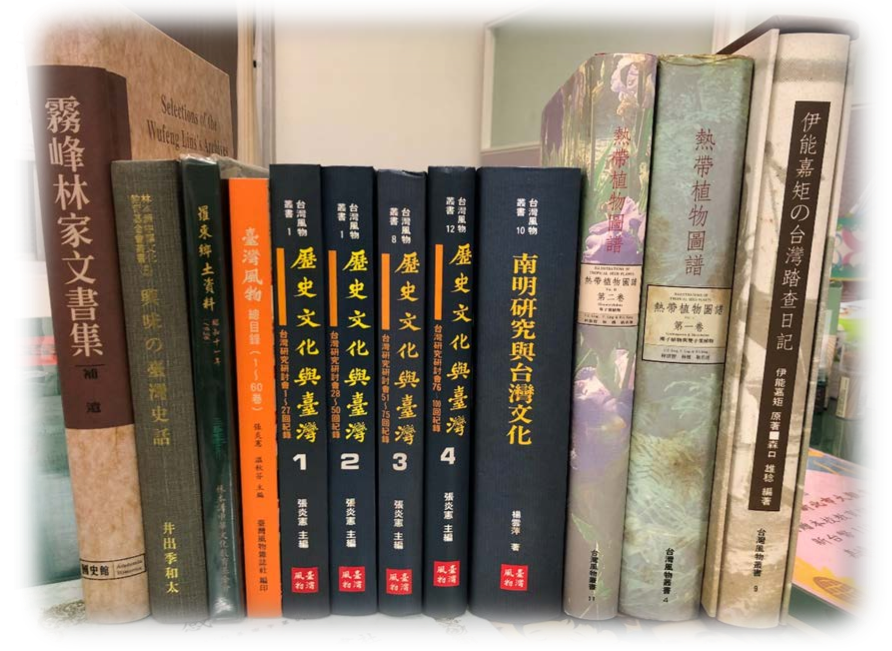 從東亞國際情勢的觀點談「牡丹社事件」
從東亞國際情勢的觀點談「牡丹社事件」
The Mutan Village Incident:
It’s significance for East Asian geopolitics
林呈蓉/Lin Cheng-jung
(淡江大學歷史系副教授)
(Associate Professor, Tamkang University Department of History)
2001-06-11

Photo portrait of Rev. Mackay.
6月2日是馬偕(Rev. George LeslieMackay 1844-1901)逝世百年紀念日,相關歷史文物研討展覽以及紀念活動陸續推出,紀念這位具有無私宗教情懷、將畢生心力貢獻給台灣的傳教士。誠如他的座右銘──寧願燒盡,不願腐銹──馬偕燒盡了自己的生命,但他的精神充分滋養著生前在台灣灑下的種子,百年來在台灣處處開花結果。本週「台灣歷史之窗」特別邀請中央大學歷史研究所教授戴寶村專文介紹馬偕在台灣的傳教、醫療與教育的歷史事蹟。
June 2 is the commemoration day of the passingaway of Rev. George Leslie Mackay (1844-1901).In memory of this missionary who, with anunselfish religious spirit, devoted his life’senergy to helping Taiwan, a retrospectiveexhibit of historical documents and a seriesof other activities are being conducted. Trueto his motto — “Better to go up in flames thanrust away” — Rev. Mackay burnt his candlebrightly to the end, yet his spirit continuesto nurture the seeds which he planted, whichover the past century have blossomed and bornewonderful fruits. For this week’s Window onTaiwan, the Taiwan News has invited ProfessorTai Pao-Tsun of the Central University GraduateSchool of History to recount the course of Rev.Mackay’s missionary, medical and educationalwork in Taiwan.
立下國外傳教的一生心願
馬偕祖籍是蘇格蘭,父母親在1830年移民加拿大,1844年 3月21日馬偕出生於安大略省牛津郡佐拉(Zorra )地方。他從當地的Woodstock小學畢業後進入多倫多的Omemee師範學校就讀,然後在Maplewoold及Maitlandville 地方的小學教書。他曾聽過英國傳教士William C. Burns演講到中國傳教的經歷,激發他想到外國傳教的心願,於是進入多倫多的Knox神學院讀書,接著再前往美國普林斯頓神學院就讀。1870年學成返鄉實習傳道數月,再到蘇格蘭愛丁堡修習研究課程。1871年加拿大長老教會總會接受馬偕海外佈道之申請,並指定中國為其宣教服務地區。
Roots of Mackay’s missionary zeal
Rev. George Leslie Mackay was born of Scottishparents who emigrated to Canada in 1830. Hewas born on March 21, 1844 in Zorra, OxfordPrefecture, Ontario. After graduating fromthat town’s Woodstock Primary School, heenrolled in Toronto’s Omemee Teacher’s College,upon graduation from which he taught at theMaplewood and Maitlandville primary schools. Aspeech given by missionary William C. Burnsabout his experience as a missionary in Chinainspired in Mackay an enthusiasm to domissionary work abroad. Consequently, heentered the Knox Theological Seminary inToronto, after which he continued his studiesat the Princeton Theological Seminary inAmerica. After completion of his studies therein 1870, he returned to Canada for severalmonths to perform a missionary internship,following which he went to Edinburgh, Scotlandto pursue graduate studies. In 1871 the headoffice of the Presbyterian Church in Canadaapproved his application to serve overseas as amissionary and designated China as his missionterritory.

Mackay and students pulling teeth.
淡水傳教的草創時期
1871年10月馬偕離開家鄉到美國舊金山搭乘America 號輪船經日本、香港、廣州、汕頭等地,並前來台灣旅行。1872年初早先已在南台灣傳教的英格蘭長老教會牧師李庥(Rev. Hugh Ritchie)陪他由高雄乘船北上。1860年清帝國開放基隆、淡水、安平、高雄四港口供外國經商貿易。1872年3月9日馬偕抵達淡水,此時淡水的商務已相當繁榮,河口山嶺的優美景色讓他堅定選擇淡水作為宣教基地,並且終生奉獻台灣。
Tamsui mission – early period
In October of 1871, Mackay left hishomeland and proceeded to San Francisco,where he boarded the S.S. America and cameto Taiwan via Japan, Hong Kong, Canton,and Swatow. In early 1872 he took passageon a boat from Kaohsiung to northernTaiwan, accompanied by Rev. Hugh Ritchie,a missionary of the Presbyterian Churchof England who had been serving insouthern Taiwan. The Ch’ing Dynastygovernment had in 1860 opened up the fourseaports of Keelung, Tamsui, Anping andKaohsiung to foreign trade, so by 1872,foreign trade was already flourishing inTamsui. When Mackay arrived there onMarch 9, the sight of the beautifulmountains bordering on the river mouthinspired him to make Tamsui hismissionary base and to devote his lifeto Taiwan.
馬偕初到淡水除面對生活條件的不便,還有語言文化的隔閡,他原先學習的北京官話在台灣派不上用場,於是向牧童學習台語,五個月後他就可以用台語傳道。他一面傳教設立教會,一方面考慮到台灣的氣候、語言風俗、經濟等因素,認為訓練本地人成為傳教士是一重要的工作,於是在七年間供在大甲溪以北地區設立了20間教會,並培養22個本地傳教師。
In the days immediately following hisarrival, besides having to adjust to variousother inconveniences, Mackay faced theproblems of language and cultural gaps, theMandarin language which he had studiedproving useless for his work in Taiwan. Sohe studied Taiwanese with shepherd youthsand 5 months later was able to begin usingTaiwanese to preach the gospel. Apart fromestablishing a church for his personalmissionary work, he recognized that, inconsideration of climatic, language,economic and other factors in Taiwan, thetraining of local missionaries was of crucialimportance. Consequently, within a 7-yearperiod, he set up 20 churches in the regionnorth of Ta Cha Hsi and cultivated 22 nativesto become missionaries.
馬偕既已決定終生在台灣傳教,1878年與五股坑的張聰明(英文名Minnie 1860-1925)結婚,生有二女瑪連(Mary Ellen 1879-1959)及以利(Bella 1880-1970),一子叡廉(George William 1882-1969)。
Having already decided to devote his lifeto missionary work in Taiwan, in 1878 hemarried Chang Tsung-Ming (Minnie, 1860-1925)of Wu Ku Keng, with whom he had twodaughters, Ma-Lien (Mary Ellen, 1879-1959)and I-Li (Bella, 1880-1970), and one son,Jui-Lien (George William 1882-1969).
 The old church in Huwei (formername of Tamsui), a major landmarkin Tamsui since its renovation in1932
The old church in Huwei (formername of Tamsui), a major landmarkin Tamsui since its renovation in1932
以耐心與勇氣完成傳教使命
馬偕在台灣竭盡心力從事宣教活動,也曾遭遇相當大的阻礙,如他在艋舺要租屋傳教甚至發生房屋被拆之事,在三峽有人擲石反對他來傳教,不過他都靠著耐心勇氣及替民眾醫病來爭取信徒。1883年以後他將傳教重心轉移至東部地區,在宜蘭平原設立了11座教堂,也曾前往花蓮和離島地區,宜蘭地區的噶瑪蘭(Kavalan )平埔族人有些人甚至以馬偕的「偕」作為他們的漢姓,總計馬偕在台三十年間供設立60間教會。1872年在淡水設立第一座教會的地點在1932年改建一座哥德式教堂,成為淡水美麗的建築物之一,旁邊的街道被命名為「馬偕街」、「真理街」,馬偕街口也塑建馬偕的頭像,成為馬偕傳教歷史的重要史蹟。
Mission accomplished through patience andcourage
Mackay carried out his missionary work withvigor despite coming up against considerableobstacles, as when a building he had rentedin Mengchia for his missionary activities wasdestroyed, or when he was stoned in Sanhsiaby people opposed to such activities. Throughit all, he won converts by dint of hispatience and courage in combination withmedical services to the common people. In1883 he toured eastern Taiwan, where heestablished 11 churches on the Ilan plain,moving on to Hualien and, later, visitingoffshore islands. Some Kavalan Pingputribespeople even adopted the character Chiehin Mackay’s Chinese surname, Ma Chieh, astheir Chinese surnames. In all, Mackayestablished 60 churches in Taiwan. In 1932,the first church built by Mackay in Tamsui in1872 was rebuilt in the style of Goethe, whichhas become one of Tamsui’s treasuredarchitectural landmarks. The adjacent streetshave been named Ma Chieh Street and Chenli(Truth) Street, and at the corner of Ma Chiehstreet stands a sculpture of Mackay’s head,which has become one of the important historicalrelics in witness of his missionary legacy.
醫療上的貢獻
馬偕本人雖非真正的醫生,但受過醫學訓練,在淡水傳教時就幫人治病服務民眾,也藉機傳播福音,他利用奎寧治療瘧疾,或替有牙疾的人拔牙,解除民眾的病苦,據他自述說在台二十多年當中幫人拔了二萬一千多顆牙齒,確實讓那些受牙痛折磨的人「沒齒難忘」恩情。
Contributions to medical care
Although formally Mackay wasn’t a physician, hehad received medical training and providedmedical care for the sick while in Tamsui,taking the opportunity to preach the gospel atthe same time. He lightened people’s suffering,for example, by employing quinine to curemalaria, or by pulling the teeth of those withdental maladies. By his own count, he pulled21,000 teeth over 20-odd years, leaving thosewho had previously been tortured by toothachewith a “tooth missing, hard to forget” senseof grateful remembrance.

Mackay family portrait intraditional Chinese garb.
1879年一位底特律市的馬偕夫人捐款三千元,支助他在淡水設立「偕醫館」「TheMackay Hospital」,一些洋行的醫生也協助醫療事務,造福當地民眾。尤其1884-85年間法國軍隊攻打淡水,不少受傷的士兵與民眾即時獲得醫治而保住性命,事後台灣巡撫劉銘傳特別頒給賞狀致謝並捐款給醫館。1912年為紀念馬偕宣教40週年並擴大醫療服務,在台北雙連新建醫院,就是今之「馬偕紀念醫院」的起源,1969年另在竹圍設立分院,1970年在關渡設立護理學校,馬偕當年將傳教與醫療相結合的作法,促成了台灣現代化醫學的發展。
In 1879 a Detroit woman, also surnamed Mackay,donated US$ 3,000 to support the constructionof the Mackay Hospital in Tamsui, where someWestern doctors in the employ of foreignbusinesses also contributed their medicalexpertise to serving the common people. Amongthose who particularly benefited were soldiersand civilians wounded during attacks uponTamsui by the French military in 1884-1885, whoowed their lives to the medical care receivedat Mackay Hospital. Afterward, the Governor ofTaiwan, Liu Ming-Chuan presented the hospitalwith a reward as a token of thanks in additionto making a personal donation. 1912 marked notonly the 40th anniversary of Mackay’s missionin Taiwan but the construction of a new hospitalin the Shuanglien district of Taipei, which wasthe inauguration of what came to be the MackayMemorial Hospital of today. In 1969 a branchhospital was established in the Chuwei area, andin 1970 a school of nursing was established inthe Kuantu area. Thus it is that Mackay’sintegration of missionary work with medicalservices spurred the development of modern-daymedicine in Taiwan.
教育上的貢獻
馬偕在台灣傳教相當重視培養本地人成為宣教人才,傳教過程也是在教育學生,至1880年所教育出來的22個學生到各地去傳教或是主持教堂事務。1880年他返回加拿大述職,報告在台灣的宣教工作,故鄉牛津郡的居民募捐了6215元,讓他帶回台灣興建學校。馬偕返回淡水後在砲台埔設計施工興建「牛津學堂」(Oxford College),1882年書院落成,取名為「理學堂大書院」,同年九月招生,有18人入學。學校教授科目包括聖經與神學之外還有地理、地質、動物、植物、礦物、醫學、歷史等等,除了教室上課還有野外考察、醫館實習,教學多元活潑,畢業後就到各地的教會服務。
Contributions to education
In his emphasis on cultivating local talentto carry on religious work, his missionaryactivities necessarily included educatingstudents. The 22 students trained by 1880 weresent to locales all over Taiwan to take upmissionary posts or serve as church pastors.When in 1880 Mackay returned to Canada toreport on his missionary work, residents ofhis Oxford Prefecture homeland donated US$6,215 dollars to enable him to build a schoolafter returning to Taiwan. Upon his return toTamsui, he began construction of OxfordCollege on the site of Paotaipu or “CannonPlatform Plain.” When completed in 1882, itwas given the Chinese name 理學堂大書院,directly translatable as Hall of Truth StudyAcademy. Classes began in September of thatyear with an initial enrollment of 18students. In addition to Bible studies andtheology, the subjects taught at the schoolincluded geography, geology, zoology, botany,mineralogy, medicine, history, etc. Inaddition to classroom lessons, the school’sprogram included nature field trips andmedical clinic internship, making for a broadand lively learning experience. Upongraduation students would go and serve atchurches all over Taiwan.
開啟女子教育之先
理學堂大書院在1909年遷到台北,改為台灣神學校。馬偕看到當時台灣社會重男輕女,女性幾乎都是文盲,於是在1883年設立「淡水女學堂」,開啟女子教育之先,1916年淡水女學校改為淡水高等女學校,再改為私立淡水女學校,1956年併入淡江中學。1965年長老教會在理學堂大書院舊址創設淡水工商管理專校,現已改制為四年制的大學,名為「淡水真理大學」,反映了其教會背景。
Pioneering women’s education
In 1909, Oxford College moved to Taipei, whereits name was changed to the Taiwan TheologicalSeminary. In response to that era’s thefavoritism of men over women and the fact thatnearly all women were illiterate, Mackayestablished the Tamsui Women’s Academy in 1883,the first school for women in Taiwan. In 1916it was renamed Tamsui High School for Women,and was later changed to Private Tamsui Schoolfor Women. In 1956 it was incorporated as partof Tamkang Private High School. In 1965, atthe site of the original Oxford College, thePresbyterian Church set up Tamsui OxfordCollege (In Chinese: Tamsui Technical andCommercial College), which has now become a4-year university called Aletheia University,reflecting its religious background.
寧願燒盡,不願腐銹
馬偕自1872年抵達淡水,至1901年6月2日因癌症去世總共近三十年之中,除兩次短暫返回加拿大述職外,將所有心力投注於長老教會的宣教、醫療、教育,他所傳播的新文化已超越純宗教層次,對台灣近代文化發展有深刻影響,尤其它來到台灣就立志終生奉獻給衷愛的台灣,更以「寧願燒盡,不願腐銹」作為行事的座右銘,馬偕夫婦在逝世之後,都安眠在淡江中學校園內,而他所留下的教會、醫院、學校的事功在台灣持續流傳,成為台灣歷史的一部份。
Better to go up in flames than rust away
During the nearly 30 years from his arrival inTamsui in 1872 until his death from cancer onJune 2, 1872, except for 2 trips back to Canadato report on his work, Mackay devoted hisentire time and energy to the PresbyterianChurch’s missionary, medical and educationalactivities. The new culture which hedisseminated has gone beyond purely religiouscontent, leaving a profound legacy forTaiwan’s modern cultural development,especially in the example he set by hisdetermination to devote himself to his belovedTaiwan and, in all of his actions, adhering tothe motto “Better to go up in flames out thanrust away.” Though the Mackay couple have nowpassed away and rest in peace on the campus ofTamkang Private High School, the fruit of theirlabors to establish churches, hospitals andschools lives on and has become a part ofTaiwan’s history.
Compiled and edited by Tina Lee/Translated by James Decker
籌備編輯李美儀/英文翻譯曹篤明









